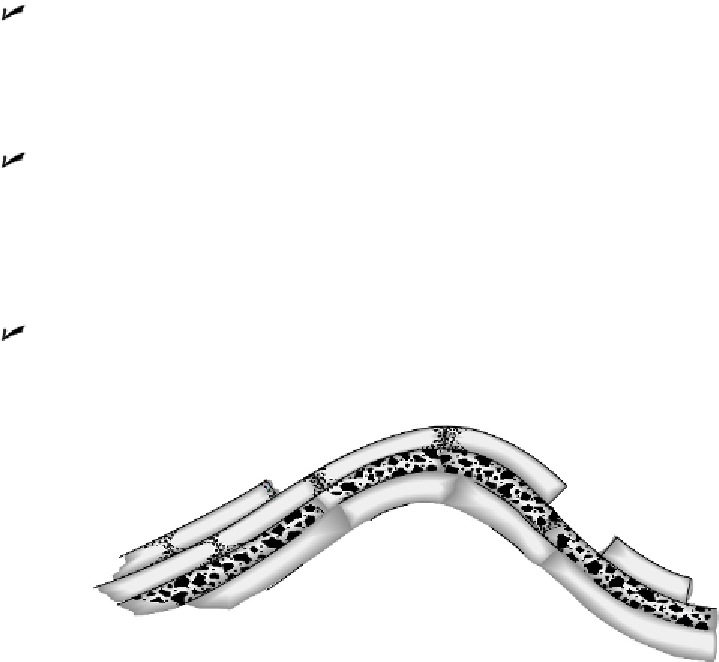Geology Reference
In-Depth Information
pushing the rock apart, or breaking off a piece of it. Usually, frost wedging takes a
few cycles of freezing and thawing so that the ice first expands the cracks in the
rock before eventually breaking it apart.
Thermal expansion:
Layers of a rock may also break off due to expansion from
heating. This type of mechanical weathering is called
thermal expansion.
In the
case of thermal expansion, usually only the outer layer of the rock breaks off.
Rocks do not absorb heat very well, so the minerals in the outer layer heat up, ex-
pand, and break off, while the inner portions of the rock stay cool.
Unloading:
Exposed igneous rocks break apart in a process called
unloading, sheet-
ing,
or
exfoliation.
As plutons (explained earlier in the chapter) are exposed, the
outer layers of rock are released from the great pressure of being buried deep in
the earth. In response to this pressure release, the minerals expand and separate
from the underlying rock in a
concentric
or
domed
pattern that is illustrated in Fig-
ure 7-7.
Abrasion:
The most common mechanical weathering is
abrasion,
or the scraping of
rocks against each other. In Part IV, I explain the different ways abrasion occurs
when I explain geologic surface processes.
Figure 7-7:
Weather-ing by ex-
foliation.
Chemical weathering
Chemical weathering
changes the mineral composition of the rock, removing or exchan-
ging ions from the minerals. (I explain ion exchange in Chapter 5.) Chemical weathering
affects only the surface of a rock. As the rock is
eroded
or broken down by mechanical
weathering, it becomes more vulnerable to chemical weathering because more surface
area is exposed.
Three types of chemical weathering can occur:




